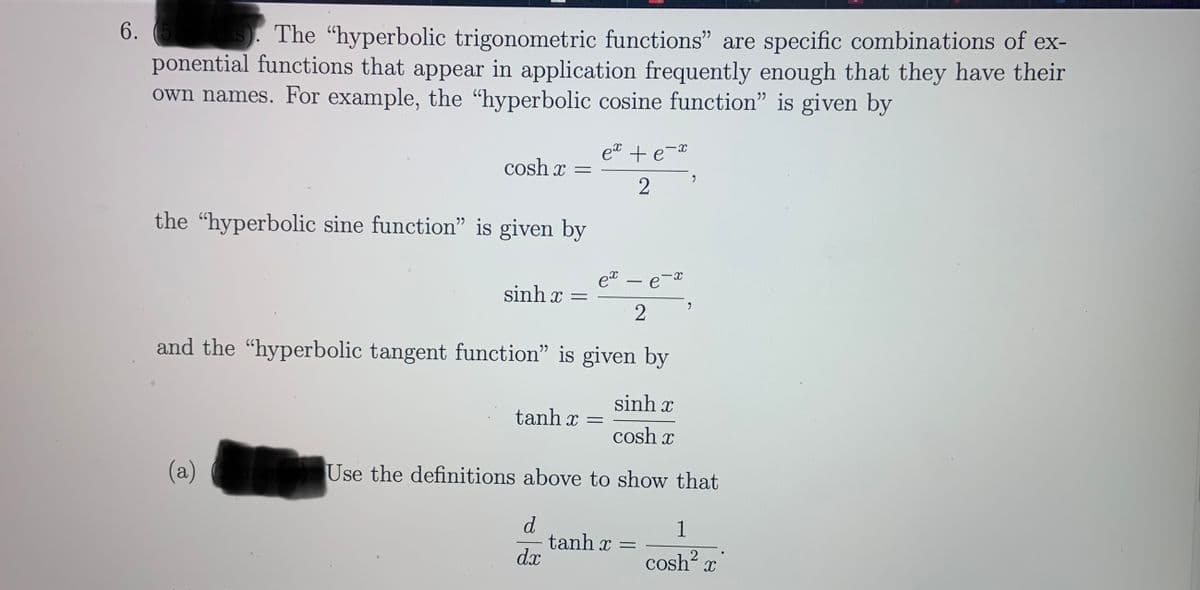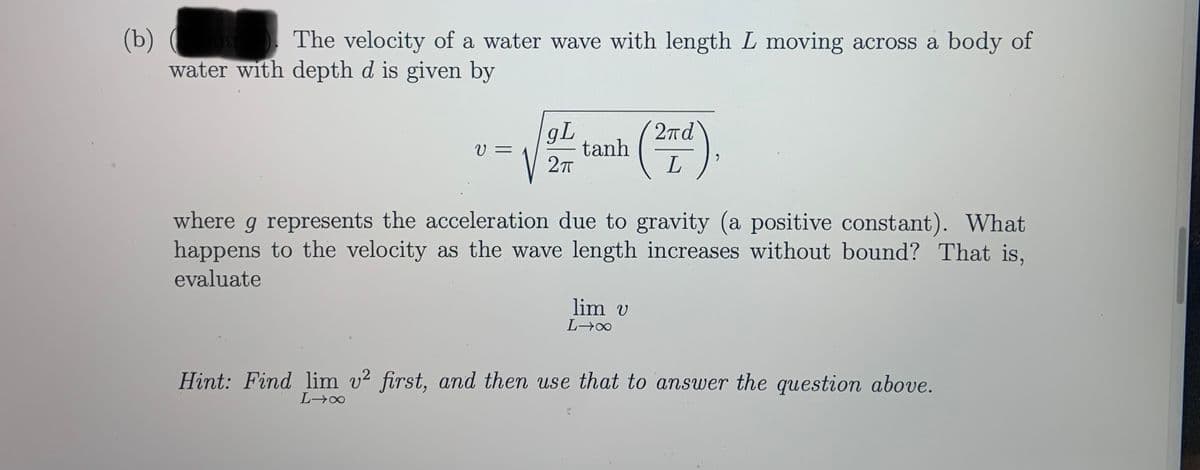6. The "hyperbolic trigonometric functions" are specific combinations of ex- ponential functions that appear in application frequently enough that they have their own names. For example, the "hyperbolic cosine function" is given by et +e-x cosh x 2 the "hyperbolic sine function" is given by et - e-a sinh x = and the "hyperbolic tangent function" is given by sinh x tanh x = cosh x Use the definitions above to show that d tanh x = dx 1 cosh x
6. The "hyperbolic trigonometric functions" are specific combinations of ex- ponential functions that appear in application frequently enough that they have their own names. For example, the "hyperbolic cosine function" is given by et +e-x cosh x 2 the "hyperbolic sine function" is given by et - e-a sinh x = and the "hyperbolic tangent function" is given by sinh x tanh x = cosh x Use the definitions above to show that d tanh x = dx 1 cosh x
Algebra & Trigonometry with Analytic Geometry
13th Edition
ISBN:9781133382119
Author:Swokowski
Publisher:Swokowski
Chapter7: Analytic Trigonometry
Section7.3: The Addition And Subtraction Formulas
Problem 80E
Related questions
Question

Transcribed Image Text:6.
S). The "hyperbolic trigonometric functions" are specific combinations of ex-
ponential functions that appear in application frequently enough that they have their
own names. For example, the "hyperbolic cosine function" is given by
et + e-
cosh x =
the "hyperbolic sine function" is given by
et e
-
sinh x =
and the "hyperbolic tangent function" is given by
sinh x
tanh x =
cosh x
(a)
Use the definitions above to show that
d
tanh x =
dx
1
cosh x

Transcribed Image Text:(b)
water with depth d is given by
The velocity of a water wave with length L moving across a body of
gL
tanh
27
2πd
V =
where g represents the acceleration due to gravity (a positive constant). What
happens to the velocity as the wave length increases without bound? That is,
evaluate
lim v
Hint: Find lim v2 first, and then use that to answer the question above.
Expert Solution
This question has been solved!
Explore an expertly crafted, step-by-step solution for a thorough understanding of key concepts.
Step by step
Solved in 2 steps with 4 images

Recommended textbooks for you

Algebra & Trigonometry with Analytic Geometry
Algebra
ISBN:
9781133382119
Author:
Swokowski
Publisher:
Cengage

Algebra & Trigonometry with Analytic Geometry
Algebra
ISBN:
9781133382119
Author:
Swokowski
Publisher:
Cengage